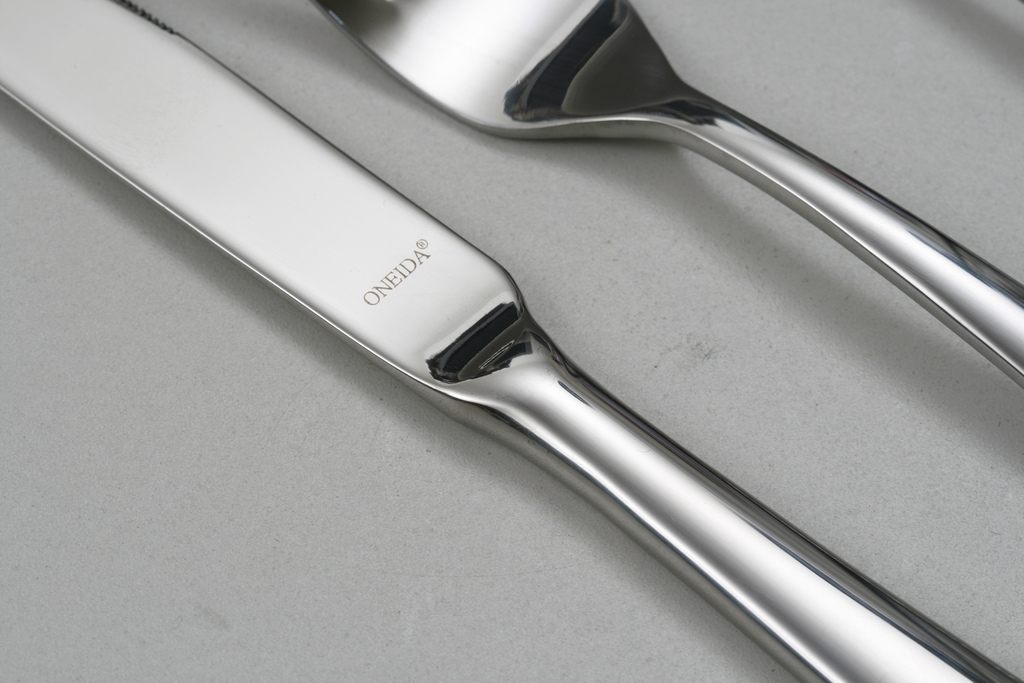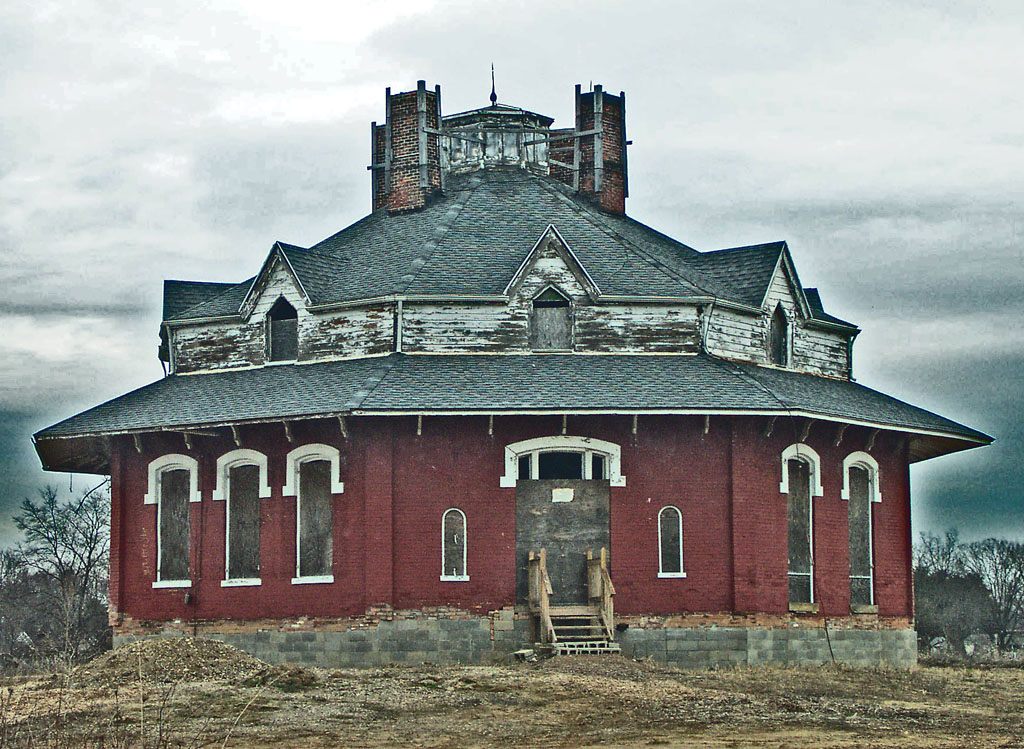Was Your Salad Fork Made in a Former Utopia?
From your fridge to your silverware, you’ve probably benefited from a utopia.

Oneida: from eugenics experiments to silverware giant. (Photo: Will Culpepper/CC BY-SA 2.0)

American history is littered with stories of failed utopian communities that tried to bring new ways of living to The Great Experiment. But even though so many of the nation’s utopia’s fizzled out, the remnants of many of these communities are still active today. Whether it’s your refrigerator, your silverware, or even your house, there’s a good chance that you have used the spoils of a utopia in your everyday life.
The specific beliefs of a given utopia vary widely amongst the various communes and disparate collectives that set up shop in late 19th-century America, but prosperity and self-reliance were common themes. Whether it was the utopian socialism of the Fourier Colonies, or the vegetarian orphans of New Mexico’s Shalam Colony, these aspirational settlements taught their participants skills like farming and furniture making so that the community might trade, thrive, and eventually spread their gospels. From this, some utopian communities came to be known for their skill at a specific craft, and many of these reputations have far outlived their original craftsmen.

An example of an octagon house. (Photo: Don O’Brien/CC BY 2.0)
One unmistakable descendant of a former American utopia is the octagon house, which is what it sounds like: a house with eight equal-sized exterior walls. They can now be found across the country, but the architectural concept originated in Octagon City, a short-lived utopian society. Established in Kansas in 1856 by a group of vegetarian businessmen, Octagon City was designed by a radical architect named Orson Squire Fowler, who envisioned the entire town laid out in an octagon of octagonal houses. The shape of the homes supposedly gave the maximum amount of usable space, short of a true cylinder.
While the prospective city died a quick death when the citizens bailed after a few short months, the design style lived on. Now there are dozens of the octagonal abodes across the United States and Canada, such as the Longfellow-Hastings House in Los Angeles, and the Octagon House in Danbury, Connecticut.
Another holdover from the days of utopian thinking is Oberlin College, the country’s first co-educational college. The institution is the product of the Oberlin Colony (which would become modern day Oberlin, Ohio), a settlement founded by Presbyterian ministers John Jay Shipherd and Philo Stewart. The pair of church men felt that American ideals had lost their way, and the Christian gospel needed to be reintroduced into daily life. Part of their utopian vision included a college that would educate both men and women, regardless of race, thus the Oberlin Collegiate Institute was started in 1835. A remarkable institution for its time, it was the first college in America to make admitting African-Americans a matter of policy, and just a few years later, became the first college in the country to grant bachelor’s degrees to women.
Both the colony and the college were radical in their open-mindedness. While Shipherd and Stewart’s community of devotees has evolved out of its utopian roots, Oberlin College is still known for its progressive attitudes, carrying the torch of the Oberlin Colony’s forward thinking into the 21st century and beyond.

Shaker furniture is simple, sturdy, and classic. (Photo: Carl Wycoff/CC BY 2.0)
One of the most well-known products of utopian individualism is Shaker furniture. The United Society of Believers in Christ’s Second Appearing, or “Shakers” for short, were a religious sect that, for a time in the mid-1800s, became one of the more widespread utopian communities in the country’s history with more than 20 significant colonies established in America. Their ideals revolved around simplicity, hard work, and creating self-sufficient communities. These utilitarian impulses resulted in the creation of Shaker-style furniture which was and is, renowned for its simple, unadorned style and sturdy construction.
The number of Shaker communities in the United States dwindled in the 20th century, and today only a single active Shaker community still exists, although there are a number of village museums that also continue their legacy, such as the Hancock Shaker Village in Massachusetts. But nothing is more symbolic of their simple ideals than the furniture style they started.

Amana refrigeration led to air conditioners like this one. (Photo: takomabibelot/CC BY 2.0)
Whole corporations have even sprung up from former utopias, such as the Amana appliance company. Iowa’s Amana Colonies were established by a group of German immigrants whose religious break from the Lutheran authorities in their homeland saw them try to create their own society in America. Eventually establishing seven villages, they believed in communal living, including such unique practices as having everyone eat in large dinner halls instead of as individual families, and doling out living expenses to each individual from a central trust.
The colonies did not become synonymous with refrigeration until the mid-20th century. The Amana Society, which governed the affairs of the Amana village citizens, purchased the Electric Equipment Company in 1936. By 1947, the newly named Electrical Department of the Amana Society had rolled out the very first upright home freezer, and cemented its place in appliance history.
The Amana Society eventually sold the company, but it retained the Amana name. Today, the Amana Corporation is owned by Maytag, and is still a leading brand in refrigerators, kitchen appliances, and even air conditioners. The ideals of the Amana Society, however, did not seem to survive with the brand.
There is also Oneida, another household name (this time in flatware) that can be traced right back to a strange utopian society. The Oneida Colony got its start in 1848 when radical socialist preacher John Humphrey Noyes started the settlement in New York. Noyes’ society held a number of controversial beliefs including that Jesus Christ had returned 70 years after his death, and that worldly perfection and freedom from sin were attainable in life. They practiced a form of “Free Love” which frowned on possessive monogamy, and even experimented with early eugenics through selective breeding. Also: they made awesome silverware.
Strangely, it is this last bit for which most people remember the Oneida name to this day. In 1899, the community began producing simple flatware, both for themselves and for trade, and the business took off. Now Oneida Limited is one of the world’s largest manufacturers of flatware and tableware. It is very likely that some of their products are in use in your home today.
It’s hard to truly quantify the effect America’s history of utopian experiments has had on our modern culture, but it’s more likely than not that you have used or experienced some aspect of utopia in your daily life, and didn’t even know it. Maybe a perfect world isn’t so impossible.







Follow us on Twitter to get the latest on the world's hidden wonders.
Like us on Facebook to get the latest on the world's hidden wonders.
Follow us on Twitter Like us on Facebook